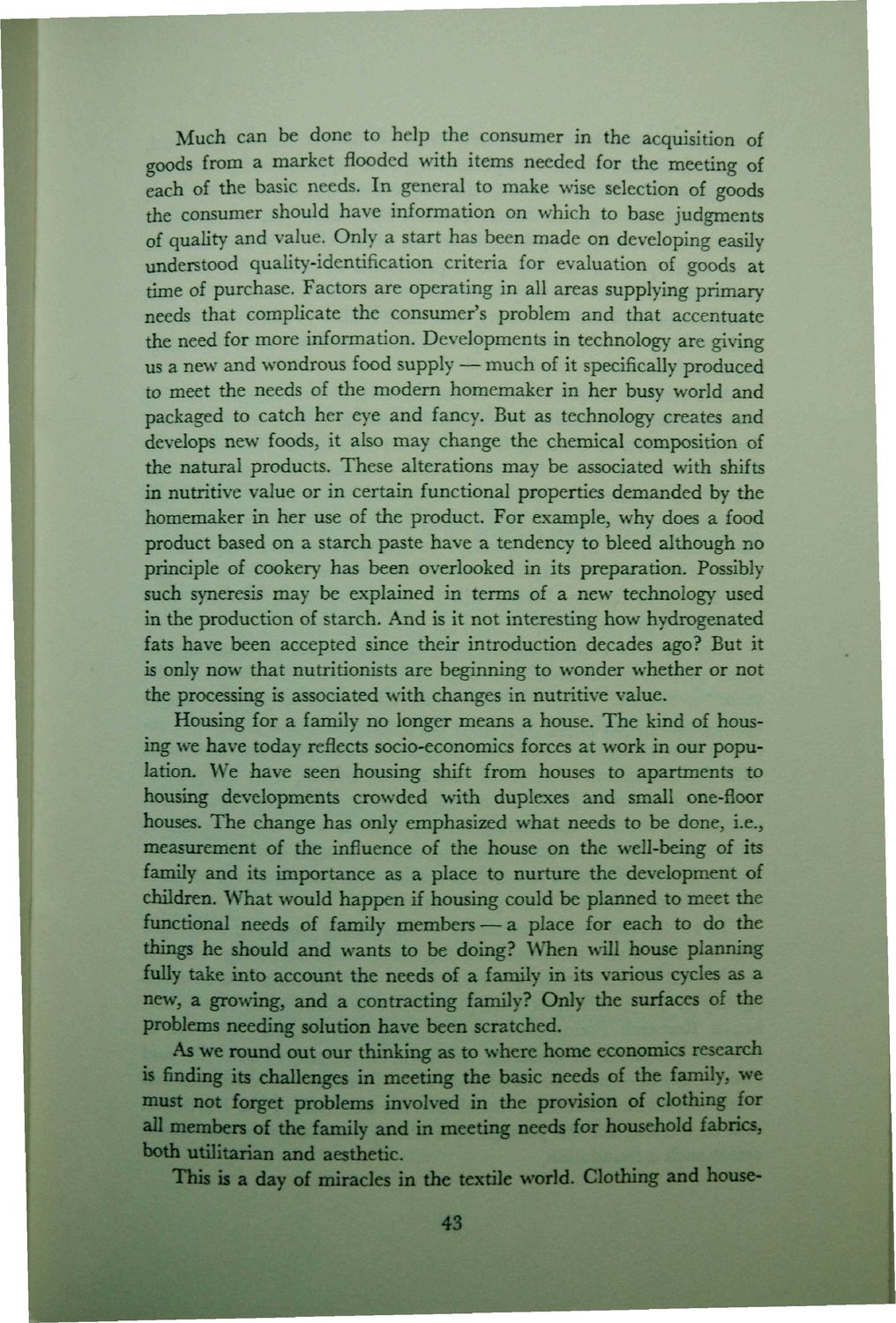| |
| |
Caption: Dedication - Home Economics - Challenge of Home Economics
This is a reduced-resolution page image for fast online browsing.

EXTRACTED TEXT FROM PAGE:
Much can be done to help the consumer in the acquisition of goods from a market flooded with items needed for the meeting of each of the basic needs. In general to make wise selection of goods the consumer should have information on which to base judgments of quality and value. Only a start has been made on developing easily understood quality-identification criteria for evaluation of goods at time of purchase. Factors are operating in all areas supplying primary needs that complicate the consumer's problem and that accentuate the need for more information. Developments in technology are giving us a new and wondrous food supply — much of it specifically produced to meet the needs of the modern homemaker in her busy world and packaged to catch her eye and fancy. But as technology creates and develops new foods, it also may change the chemical composition of the natural products. These alterations may be associated with shifts in nutritive value or in certain functional properties demanded by the homemaker in her use of the product. For example, why does a food product based on a starch paste have a tendency to bleed although no principle of cookery has been overlooked in its preparation. Possibly such syneresis may be explained in terms of a new technology used in the production of starch. And is it not interesting how hydrogenated fats have been accepted since their introduction decades ago? But it is only now that nutritionists are beginning to wonder whether or not the processing is associated with changes in nutritive value. Housing for a family no longer means a house. The kind of housing we have today reflects socio-economics forces at work in our population. We have seen housing shift from houses to apartments to housing developments crowded with duplexes and small one-floor houses. The change has only emphasized what needs to be done, i.e., measurement of the influence of the house on the well-being of its family and its importance as a place to nurture the development of children. What would happen if housing could be planned to meet the functional needs of family members — a place for each to do the things he should and wants to be doing? When will house planning fully take into account the needs of a family in its various cycles as a new, a growing, and a contracting family? Only the surfaces of the problems needing solution have been scratched. As we round out our thinking as to where home economics research is finding its challenges in meeting the basic needs of the family, we must not forget problems involved in the provision of clothing for all members of the family and in meeting needs for household fabrics, both utilitarian and aesthetic. This is a day of miracles in the textile world. Clothing and house43
| |